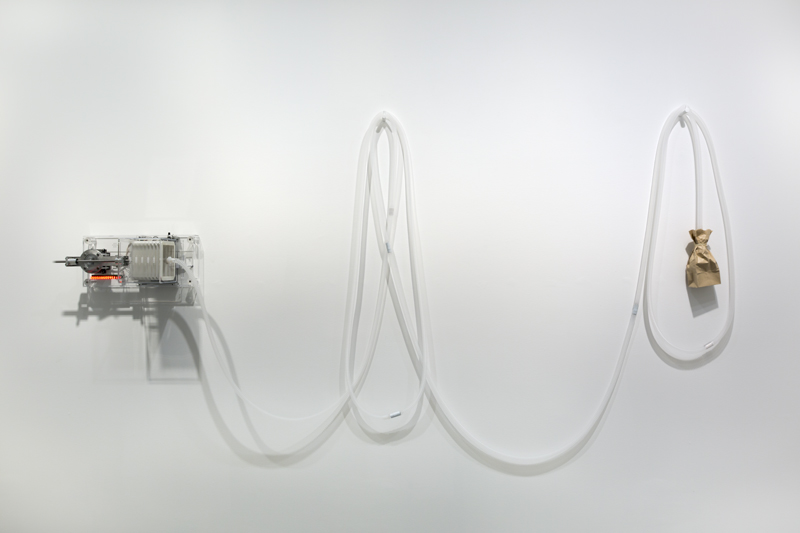
Last Breath is an installation designed to store and circulate the breath of a person forever. The piece consists of a small brown paper bag which inflates and deflates automatically thanks to motorized bellows similar to those found in artificial respirators in hospitals. The apparatus hangs on a wall and is activated 10,000 times a day, the typical respiratory frequency for an adult at rest, including 158 sighs. Each stroke of the machine advances a digital counter that beeps. The breath circulates between the bellows and the paper bag through a ribbed transparent plastic tube that emits a faint and hypnotic low sound. The tube can be as large as necessary to either hang the bag right beside the piece, on the same wall, or to create a labyrinth on the ceiling of the exhibition that ends with the bag suspended in the middle of the room. The brown paper bag makes a rhythmic crushing sound as it inflates and deflates. As a biometric portrait, the piece requires careful curation, and the question of who gets stored should be in itself an interesting debate. The portrait should work as a living memorial of a senior respected artist, ideally a poet, singer or dancer. A small video of the person blowing into the bag is exhibited beside the apparatus.
Jordan Parsons - Programming and hardware
David St-Onge - Programming and hardware
Guillaume Tremblay, Pierre Fournier and Sebastien Dallaire - Production support
- Antimodular Research



